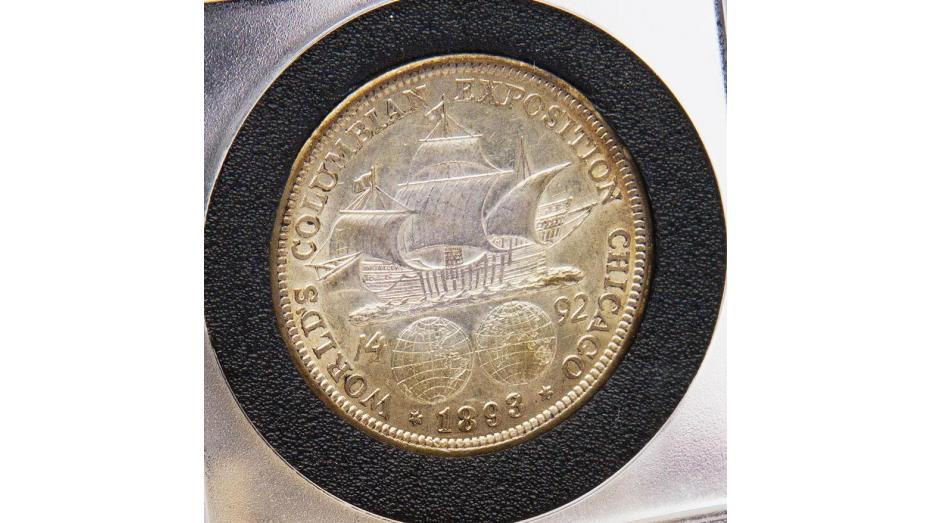The Columbian Half Dollar: America’s First Commemorative Coin
Christopher Columbus is remembered for famously voyaging to the Americas aboard La Santa Maria in 1492. This event, credited for expanding Western culture to the “New World,” shaped our world to a greater degree than perhaps any other event in history.
To celebrate the 400th anniversary of Columbus’ voyage, the 1893 World’s Fair was devoted to the occasion. Several American cities expressed interest in hosting the Fair, but Chicago was awarded the honor after placing the highest bid.
The 1893 World’s Fair hosted new buildings crafted by the world’s finest architects, performances from renowned musicians, and art exhibits akin to those of the Renaissance. It is often credited for accelerating the technological advancement of the Gilded Age, and also for shaping Chicago’s identity as a city. All in all, the festival lasted six months from May to October and hosted visitors from 46 countries.
As one means of helping fund this extravagant event, Congress had authorized the US Mint to produce a silver half dollar that would commemorate both the 400th anniversary of Columbus’ discovery and the fair itself. Thus, the Columbian Half Dollar became the first commemorative coin in the history of the United States.
Mint Chief Engraver Charles Barber was tasked with designing the coin, and he was aided by his assistant, George T. Morgan. Per instructions from Fair Official James Ellsworth, the obverse was modeled after a painting of Columbus by Italian painter Lorenzo Lotto. The simplistic design depicts Columbus’ right-facing portrait, encircled by the words “United States of America” and “Columbian Half Dollar.”
The half dollar’s true beauty resides on its masterful reverse. It depicts La Santa Maria sailing across the ocean as wind blows through its sails. Beneath the ship are two globes, symbolic of the world’s two hemispheres and Columbus’ travels across both. The globes are flanked by the year “1492,” and the phrase “World’s Columbian Exposition Chicago” encircling the entire design. This motif was originally sketched by an artist named Olin Levi Warner but was perfected by George Morgan.
The coin’s production began at the Philadelphia Mint on November 19, 1892. It was struck throughout the remainder of 1892 and well into 1893. In total, an estimated 5,000,000 were produced. This mintage, however, far exceeded demand, and very few examples sold at their desired price. Altogether, the project’s goal failed to raise the funds hoped for the Fair.
When the fair ended, half of the remaining coins were melted and the silver was returned to the Mint. The rest of the coins remained available for sale, but were eventually released to circulation when interest dwindled.
Relatively few 1892 and 1893 Columbian Exposition Half Dollars remain to date, as only 28,180 have been certified in any grade by either NGC or PCGS. Circulated and low Mint State examples are readily available at collector-friendly prices, while finer examples routinely sell for thousands of dollars. The finest known Columbian Exposition Half Dollar is certified Mint State 68 by NGC, and it sold at auction for $13,800 in 2002. Today, that coin is estimated to be worth $35,000.
Over time, the Columbian Half Dollar has gained tremendous prestige and respect for being the first of countless commemorative coins issued by the United States Mint. Between its historical significance and its beautiful design, the Columbian Half Dollar certainly set a high standard for all commemoratives that followed.






